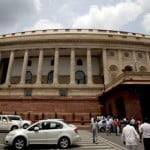
By drastically raising the capacity addition target to 60,000 megawatt (MW) from the present 24,000MW, the Indian government has managed to create a buzz in the wind energy sector. At least one equipment supplier has recently commissioned a new facility to cater to new wind farms and asset developers are seeing great investor interest.
While the renewed interest is encouraging, the underwhelming performance of the sector in recent years calls for caution. An analysis of operational wind energy projects by India Ratings and Research Pvt. Ltd found that the assets on an average are operating below their potential, impacting the projects’ internal rate of return.
Against a potential of 18-22%, the sector registered a plant load factor, or PLF, of 15-17% over the past three years, India Ratings said in a note. Worryingly, the PLF has been on a downward trajectory since 2013 and projects in states that are best suited to generate wind energy— Tamil Nadu, Maharashtra and Rajasthan—are operating below their potential by a wide margin.
According to India Ratings, around three-fourths of the installed capacities are captive plants and many of them are set up to avail tax benefits, hence the projects are not seen as profit centres. Relatively, independent projects with focused plants fared better, the ratings agency points out.

That provides no succour. One megawatt of wind energy is estimated to cost around Rs.6 crore. Three-fourths of the current 24,000MW would have cost upwards of Rs.1 trillion. Though the projects may have brought tax breaks, a substantial portion of the (corporate) investments are generating below par returns.
As focused companies with dedicated managements enter the sector, the ratio of captive to independent power generators is expected to change with greater participation from the latter. But that may not dramatically improve the operating parameters. The issues facing the sector are more deep rooted.
Projects in the best suited wind energy states are facing problems like lack of power purchase agreements, evacuation and transmission infrastructure, and poor compliance of renewable purchase obligations. As a result, capacity additions in some of these states has slowed recently.
Of course, other states are seeing good investments and the government is looking to address the industry problems. But the steps—dedicated transmission lines for the renewable energy sector and stricter implementation of purchase obligations—can take time as they involve co-ordination among the centre, states and regulators.



